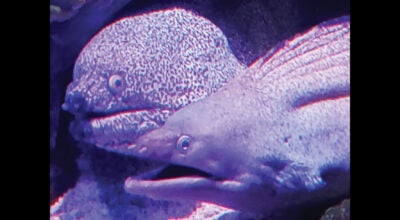To be like Reepicheep
Published 4:31 pm Wednesday, February 21, 2024
So many wonderful fictional characters exist in books and films. As children watching and reading, and listening to tales told to us, we cannot help but imagine ourselves in those worlds, in those situations, or even as those characters.
I know I was far from the only boy who imagined himself as the Lone Ranger or Tonto, as Tarzan or one of the great apes, as a spaceman on a mission to Mars, as the great swordsman Zorro, Sinbad the sailor, or any of dozens of other characters. Robin Hood, King Arthur, Frankenstein’s monster or the Wolfman — there were oh, so many. Even in the “bad guys” we could see things we found interesting enough to want to mimic.
One of my favorite book series as a child remains one of my favorites today — “The Chronicles of Narnia,” by C. S. Lewis. The famous seven-book saga includes tales of the Pevensie children and magical creatures in such books as “The Lion, the Witch and the Wardrobe,” “The Magician’s Nephew,” and “The Voyage of the Dawn Treader.”
I would be hard-pressed to choose just one book as my favorite (though it’s probably “The Magician’s Nephew”) or one character as the best of them all — Aslan? Digory? Mr. Beaver? Bree, the horse? The evil ape, Shift? Maybe the dimwitted donkey, Puzzle …
But one of my favorites absolutely is the two-foot-tall talking mouse named Reepicheep. The dark-furred rodent wears a gold circlet on his head with a crimson feather, and carries a rapier as a weapon. He leads the Talking Mice in battle under Prince Caspian’s command, and helps the heroes on their missions, but most of what he does in the books in which he appears is secondary to his one true dream — his mission, really.
He wants to find Aslan’s Country. It is the place where Aslan the Lion, Creator of Narnia, the good prince who is very much the Christ-figure of the tales, resides and it is therefore the one place Reepicheep desires deeply to be. He has wanted it his entire life, and it has been his singular drive.
I don’t like giving spoilers, but the books are 60-70 years old, and some knowledge of them certainly won’t “spoil” the enjoyment you’ll get reading them if you haven’t already. In “Voyage,” Reepicheep volunteers to travel with the others across the sea to the far east end of Narnia on the ship The Dawn Treader, because they have been told it is the only way to break the curse over a lord they must rescue. He also knows that at least one of them will never return from the trip.
At the conclusion of the book, the brave, honorable and humble mouse — who has championed the weak and befriended the lonely, defending the defenseless — leaps into the sea because he realizes he is the one who must never return, and the others must now go back to their own lands.
Reepicheep discovers the water to be sweet and more like liquid light than water. He is no longer worried, hungry, or tired, and disappears from their sight over the crest of a wave. He has reached Aslan’s Country. In the final book of the series, when the children reach that country themselves, who is there to greet them but the humble mouse?
It’s a metaphor for death, and for life. Lewis explained this once in a letter, writing, “of course anyone in our world who devotes his whole life to seeking Heaven will be like Reepicheep.”
Now, that’s a mouse I want to be like.
News editor Brett Campbell can be reached at brett.campbell@dailyleader.com.






